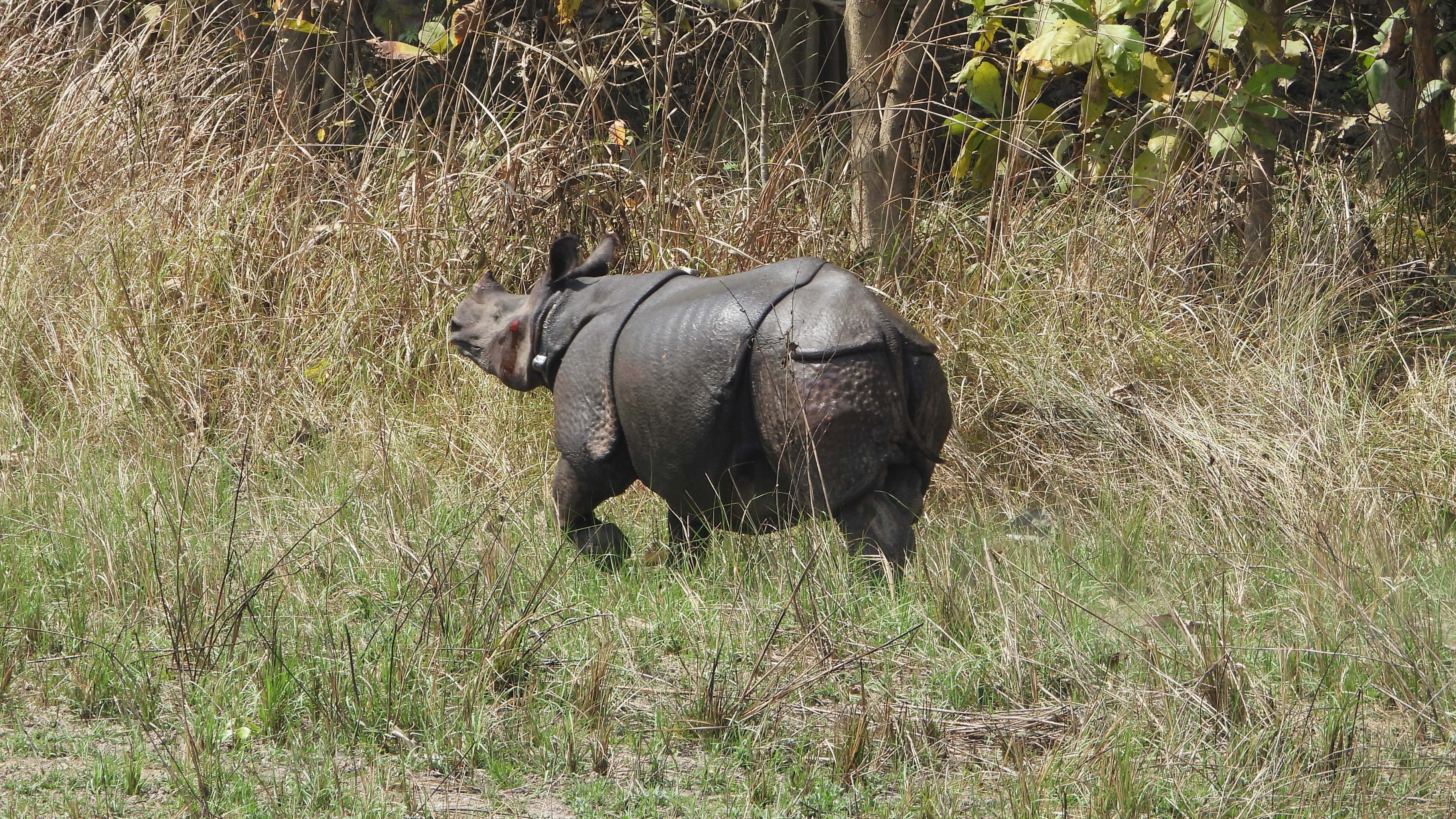
Two rhinos were released.
Credit: WWF-India.
New Delhi: Two greater one-horned rhinos were released at the Dudhwa tiger reserve on Thursday, making five such pachyderms that are now in the wild in Terai region of Uttar Pradesh after more than 150 years.
The area was once home to Indian rhinoceros, but the last one was wiped out way back in 1867.
A plan to reintroduce the rhinos in the landscape was conceived in 1984, but for 40 years the animals were kept inside an enclosure within the national park.
In November 2024, the Uttar Pradesh forest department finally released one male and two females in the wild while another two greater one-horned rhinos – one male and one female – were free-ranged today.
The two are from a crash of around 46 animals in containment for over four decades inside a 27-sq km fenced rehabilitation area at Dudhwa.
They were identified and tracked with the support of the camp elephants and their trained mahouts. Specialised teams of experts helped tranquillise the rhinos, moved them and released them after checking their health parameters.
Queried about the four-decade long wait in releasing the rhinos in the wild in Dudhwa, a seasoned forester told DH that issues like proximity to India-Nepal border, the rhinos straying into agriculture fields and park’s capacity to restrain and immobilise the animals are some of the key factors behind the wait.
“After decades of hard work, the efforts to bring back rhinos to India’s Terai landscape have finally begun to bear fruit,” said Anuradha Vemuri, Principal Chief Conservator of Forest (Wildlife) and Chief Wildlife Warden, Uttar Pradesh Forest Department.
Sources said the plan was to build and stabilise a base population of the rhinos – originally translocated from Kaziranga – before a decision was taken to release them in batches. The capacity of the enclosure to house the animals was also shrinking.
“The translocation exercises will help re-establish the population of free-ranging rhinos, expand their habitat, and reduce the risk of inbreeding,” said Sunil Chaudhury, PCCF, Uttar Pradesh Forest Department.
While Terai region in Nepal houses the rhinoceros population, they (along with wild buffaloes and pygmy hogs) disappeared in the Indian side of terai due to loss of habitats as grasslands were converted to agricultural fields due to a rise in population.
Poaching also contributed but deployment of the SSB along the Indo-Nepal border led to an improvement in the situation.
“Ecological, managerial and security considerations play a key role behind release of the rhinos in the wild,” sources said.
“A stable population of free-ranging rhinos benefits the larger Terai landscape, which is one of the best production landscapes in the country. Rhinos also spread seeds through their dung which enriches their soil and helps plants flourish. They are indicators of grassland ecosystems,” said Dipankar Ghose, Senior Director of Biodiversity Conservation, WWF-India, which provides technical support to the translocation programme.
